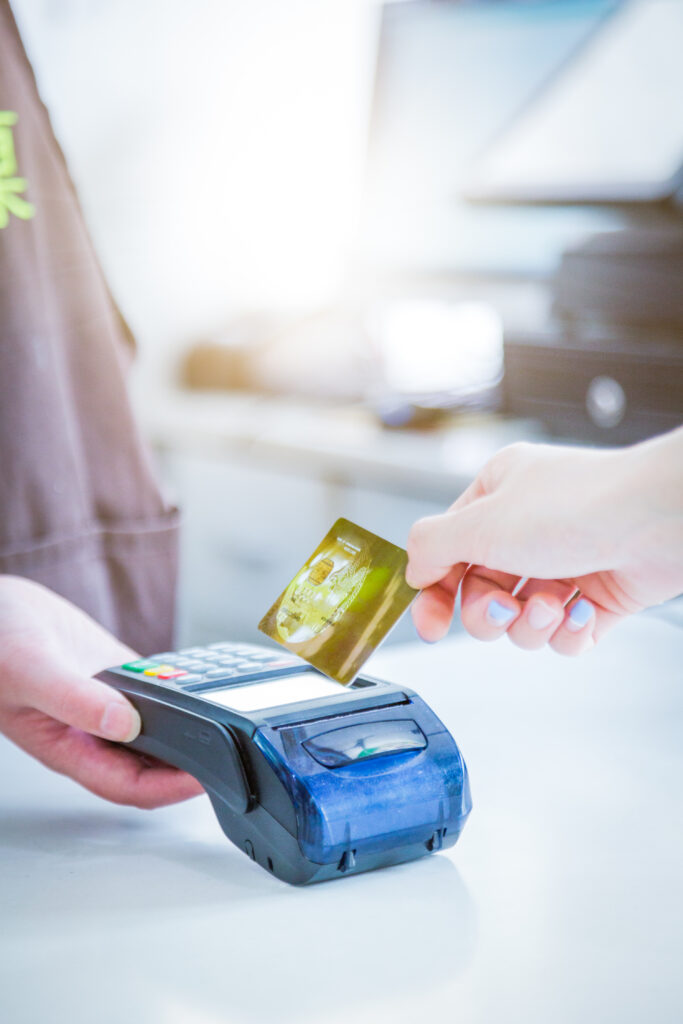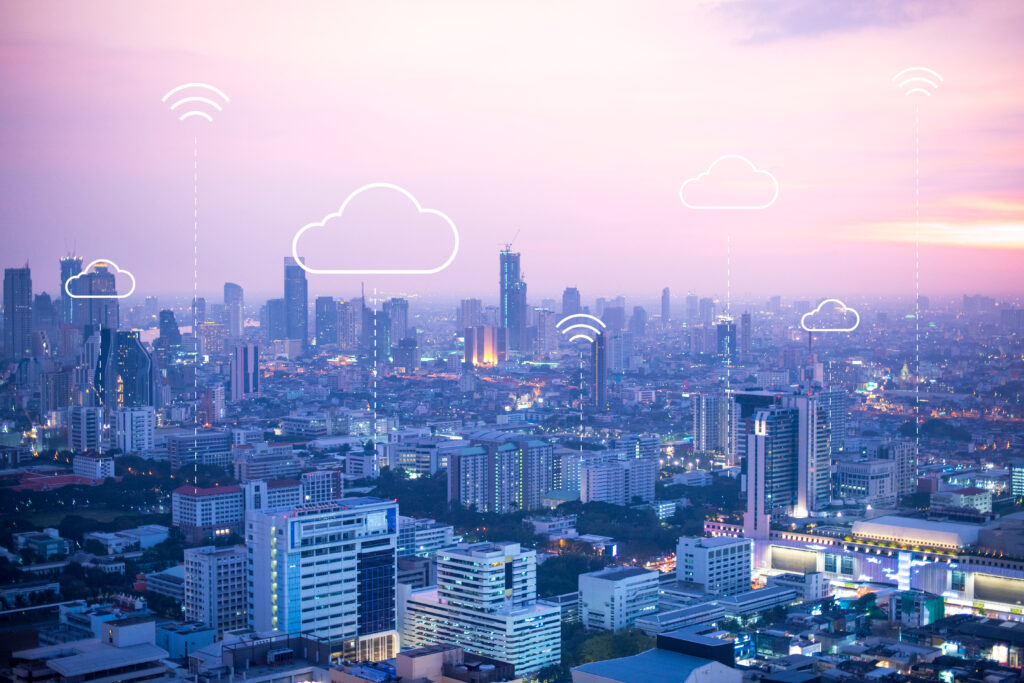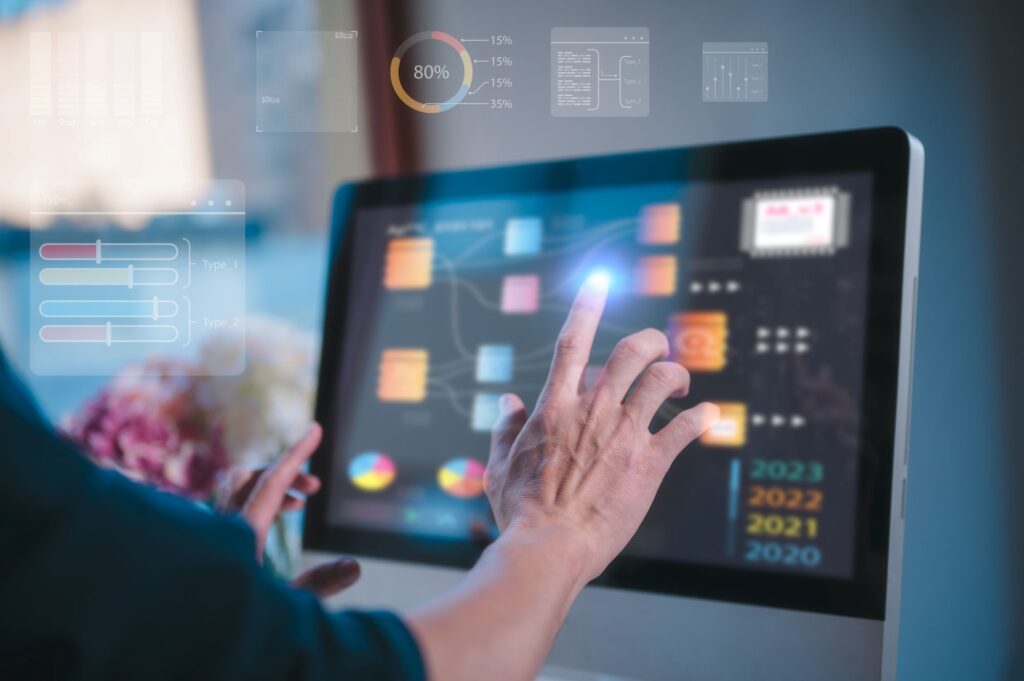A UK study found that a 1% increase in dwell time boosts spending by 1.3%. Seamless, secure connectivity best delivered through enhanced cellular coverage keeps shoppers, staff, and even emergency services connected, encouraging longer stays and higher revenue.
Connectivity that Sells
Cellular AccesS, A
Retail Imperative
Shoppers now rely on smartphones over staff. Modern in-building wireless systems enable seamless connectivity, data insights, and improved experiences that drive revenue growth.
Get Excited to move
Improved Shopping Experience
Omnichannel Trends
90% of U.S. consumers shop omnichannel, spending 1.5x more with 25.6% margins. Examples include Aldi–Instacart’s Connected Stores and Sam’s Club checkout-free app. All rely on secure, reliable wireless connections without them, revenue is lost.
Increased Dwell Times
Impact of Shopper Calls
A Wharton study found that shoppers making phone calls spend more up to 10–20% higher due to real-time advice, reduced anxiety, and greater confidence. For this analysis, we assume a 2% spend increase among 20% of shoppers, highlighting the revenue impact of secure, reliable in-store connectivity.
Changing Behaviors
In a recent study of changing customer behaviors, consumers Agreed / Strongly Agreed that
Shopping Habits Have Shifted
50
%
Need for Faster Store Visits
5
%
Preference for Browsing
20
%
Desire for Fun & Easy Navigation
0
%
Demand for Product Information Access
35
%
Connecting Shoppers :
Wi-Fi vs. Cellular Technology
In practice, only 15% of shoppers will follow through the steps to connect to in-store Wi-Fi no matter how good it is or how easy it is to access. So why do retailers rely heavily on Wi-Fi and even promote in-store Wi-Fi as the solution for connecting customers? One answer is that retailers are comfortable with Wi-Fi it’s easy to deploy and most think that if they allow consumers to access the in-store network that is already in place to manage store operations, customers will be satisfied. The reality is that Wi-Fi alone often isn’t robust enough to support shoppers’ needs and expectations. A full wireless strategy, starting with Wi-Fi but also including public cellular, private cellular, and an loT sensor network, is needed to meet the connectivity demands of consumers and the systems and apps they routinely interact with while shopping.

Successful Retailers
Connect Customers
Litenet has been providing in-building cellular DAS to enterprise customers since 2019. As smartphone use has exploded, and with the merging of online and offline experiences, modern successful retailers are quickly capitalising on the opportunities they have to improve customer experience to drive up revenue.
Retail Car Showroom
We provide car showrooms with reliable in-building cellular coverage, ensuring uninterrupted connectivity for both staff and visitors. This enhances customer interactions, supports digital tools for sales, and creates a premium experience for potential buyers.
Vehicle Service Centres
Our solutions bring strong, reliable cellular signals to service centres, enabling smooth scheduling, tracking, and communication. With fast transactions and connected systems, centres can deliver more efficient, hassle-free customer service.
Supermarket Chains
For supermarkets, we deliver scalable coverage solutions that power operations like inventory management, digital payments, and IoT sensors. Reliable in-store connectivity ensures faster checkout, improved supply chain visibility, and stronger customer engagement.
Global Electronics
AOur cellular DAS systems provide dependable coverage across large retail floors and warehouses. This supports mobile transactions, online-to-offline shopping, and operational efficiency, helping these businesses scale effectively.
Luxury & Sportscar Brands
We enhance luxury and sportscar showrooms by ensuring flawless connectivity for staff and customers. This supports immersive digital experiences, smooth transactions, and a high-class environment that reflects the prestige of these brands.
Fashion Beauty Brand
Our solutions ensure consistent in-store coverage for fashion, beauty, and furnishing retailers. This enables mobile-driven experiences, smart fitting rooms, IoT integrations, and efficient operations all contributing to customer loyalty and increased sales.
Customer Experience Challenges and Pain Points
Retailers face major customer experience challenges, from unreliable in-store Wi-Fi and failed transactions to poor integration of digital tools and rising competition. Slow payments, limited online ordering, and inconsistent systems frustrate shoppers, while lack of seamless access to product info and real-time insights drives them toward better-connected competitors. To stay relevant, retailers must ensure smooth digital engagement, reliable connectivity, and advanced data-driven solutions.
Wi-Fi Usage
Customers avoid public in-store Wi-Fi due to poor performance and security.
Competition
Weak data insights and slow tech adoption reduce competitiveness.
Transactions
Failed or slow payments cause abandoned purchases.
Expectations:
Customers can’t easily access loyalty apps or product info.
Justifying an Investment in Cellular Coverage
To demonstrate a strong ROI, we developed a model grocery retailer called “Standard Store” using customer data, industry reports, and reasonable assumptions such as store size, revenue, costs, and efficiency. Standard Store represents a 100,000 sq. ft. outlet generating around US$50 million annually, with in-store free Wi-Fi connection data drawn from customer usage and other insights from industry benchmarks. Our analysis shows that enhanced connectivity can drive significant improvements in consumer experience, leading to an estimated 13% uplift in overall business performance.

Elevating the Customer Experience with Connectivity
Provide seamless in store digital access to product information.
30
%
New Customer Experience
Consumers expect in-store shopping to match their habits and lifestyles. A study by RSR shows 73% of shoppers say their shopping behavior has changed in the last 3 years, and 87% want the same access to product information in-store as online. Yet only 24% feel retailers provide exciting in-store experiences. Leading retailers stand out by empowering customers and delivering engaging experiences that drive loyalty.
Seconds Lost While the customer waits for the app to load
10
sec
Speedy Convenient Checkout
According to a study by the National Retail Federation, shoppers are three times more likely to abandon their purchases when faced with long checkout lines. Many factors contribute to long checkout lines, including delays from shoppers struggling to access their loyalty apps and digital coupons at the POS due to poor wireless connectivity to their phones. Even in stores with free Wi-Fi access, surveys indicate that less than 20% of users will opt to connect to in store Wi-Fi.
Of Us Consumer engage in omni channel shopping Now a days
29
%
Delays Impact Efficiency
The average grocery store checkout typically takes around 73 seconds. However, when customers struggle to load loyalty apps or access digital coupons due to poor wireless connectivity, this process can be slowed down significantly. Even a 30-second delay—caused by waiting for apps to load or connecting to in-store Wi-Fi—extends the overall checkout time by about 41%. This not only creates longer lines and reduces store efficiency, directly impacting customer satisfaction and revenue goals.
Supporting Retail Media Networks
Grocery Doppio values U.S. grocery retail media networks at $8.5B, with 73% of executives seeing them as key to consumer engagement and ad optimization. Success depends on customer data and in-store traffic insights. Loyalty apps with sensor networks and DAS-integrated beacons enable precise location tracking for targeted ads, while private 5G supports dynamic in-store content like smart mirrors. Even a 5% increase in shopper spend makes the investment worthwhile, but without reliable connectivity, this market potential cannot be fully realized.

